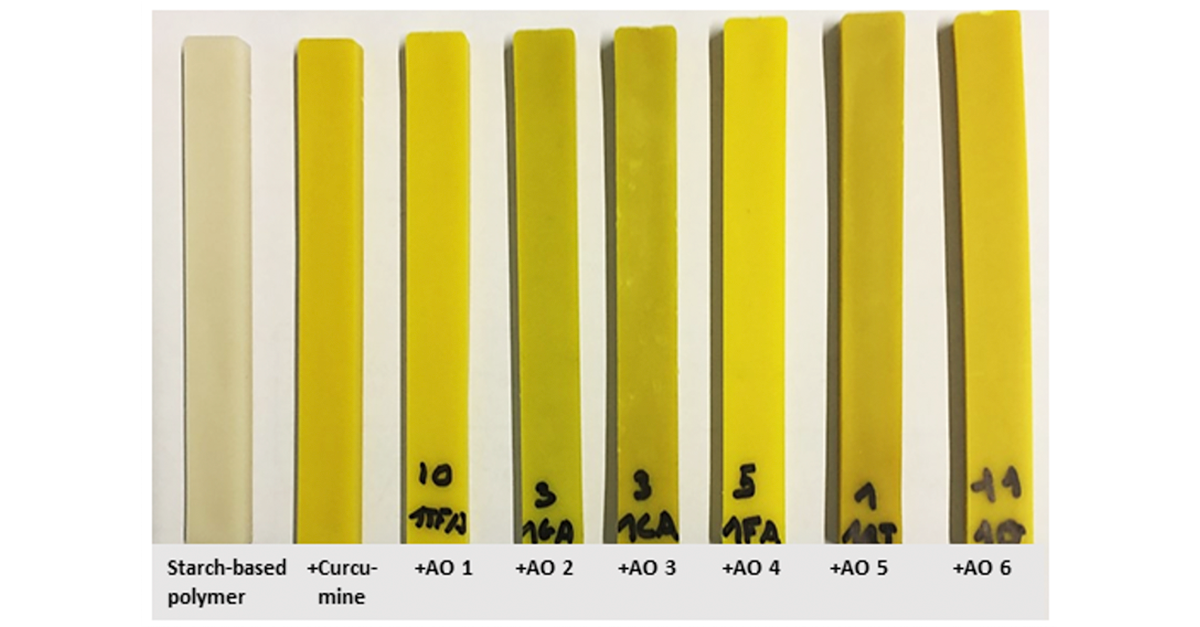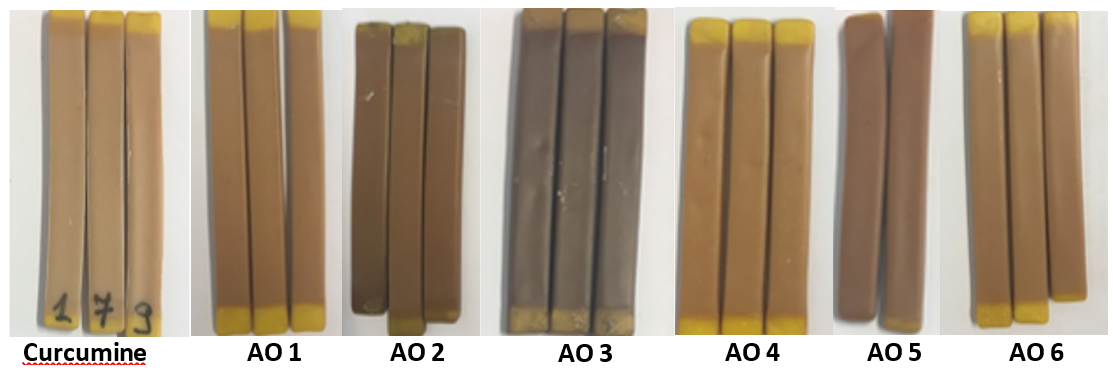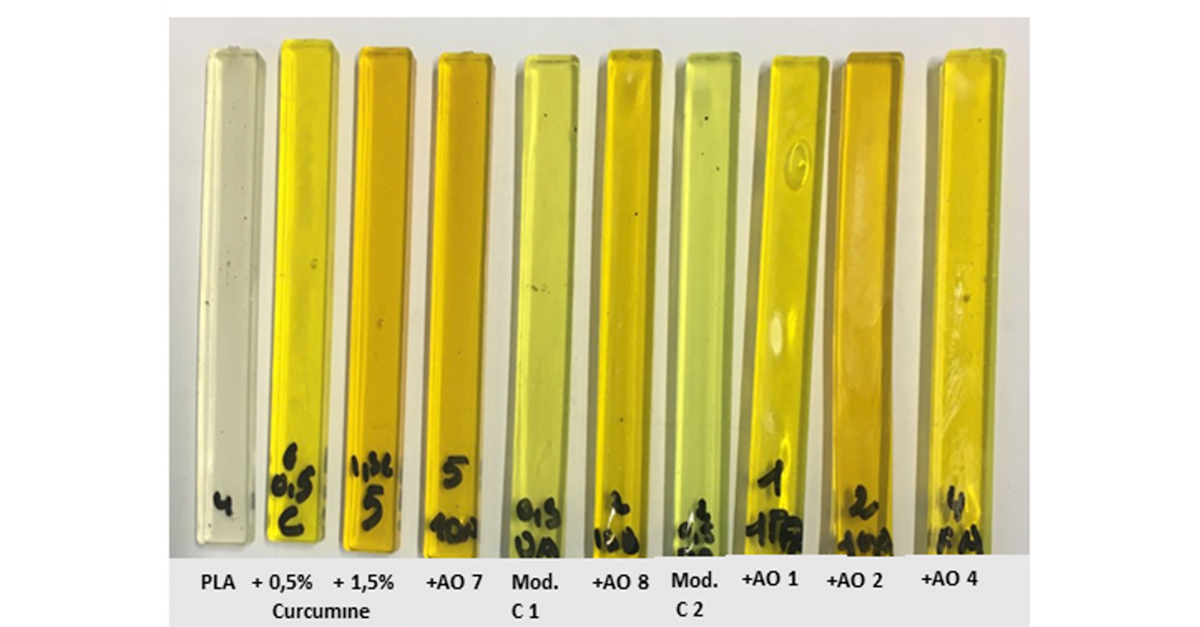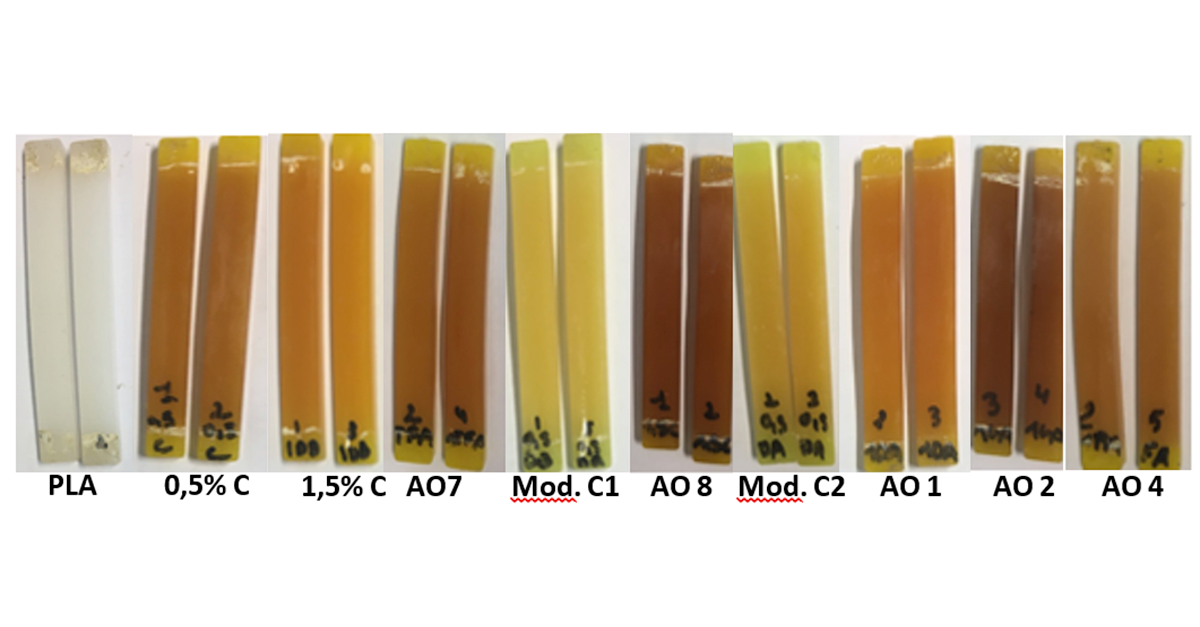Two biodegradable polymers, i.e. a starch-based polymer and PLA, were selected to study the UV stability of curcumine in a plastic matrix. Curcumine is known as an unstable substance when exposed to UV.
In order to improve its stability, two routes were investigated: 1) the use of stabilizers (both natural and synthetic ones) and 2) the modification of curcumine to tune its color but also its stability. The latter step was performed by AVANS Hogeschool.
In case of the starch-based polymer (figure 1), stabilizers were added to the polymer matrix and as can be seen in figure 1, their addition already resulted in a color change. In a next step, the samples were aged via a Q-UV treatment, of which the results after 500 hours of exposure are displayed in figure 2. All the samples turned brown and therefore, it could be concluded that the selected stabilizers did not result in successful stabilization of curcumine.
Figure 1 (right): Starch-based polymer samples: a blanc sample is shown, together with a curcumine-containing sample and the stabilized versions (i.e. + AO). Commercial stabilizers, but also natural ones were added to study their UV-stabilization effect.
Figure 2 (below): Starch-based polymer samples after 500 hours of Q-UV ageing.




